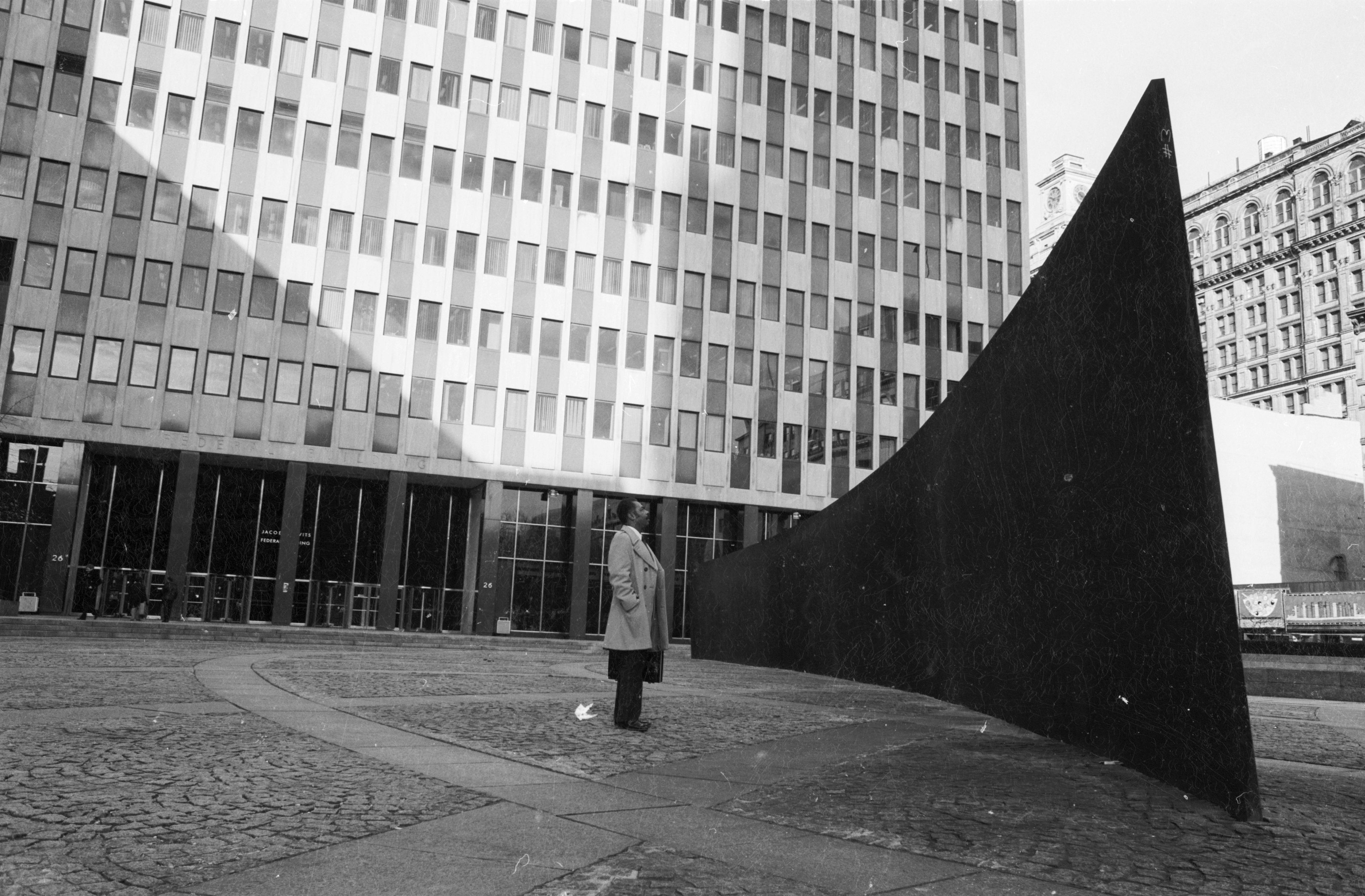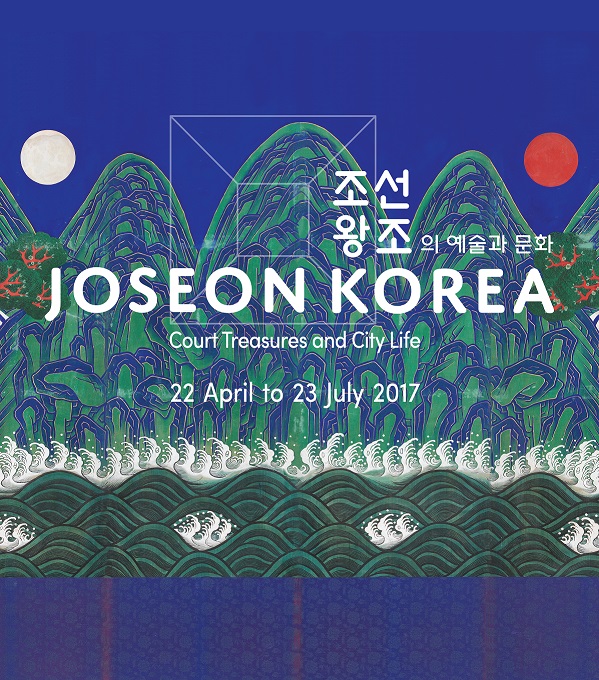
Features
Joseon Korea: Court Treasures and City Life
By Ting Tan and Daphne Tan
Some of Korea’s most precious artefacts from the Joseon Dynasty are currently on display in Asian Civilisation Museum’s latest exchange exhibition titled Joseon Korea: Court Treasures and City Life. Collaborating with National Museum of Korea, Deagu National Museum and the National Palace Museum of Korea, artefacts of everyday life and precious objects from the palace had been brought to Singapore for a three-months long exhibition from 22 April 2017 to 23 July 2017.
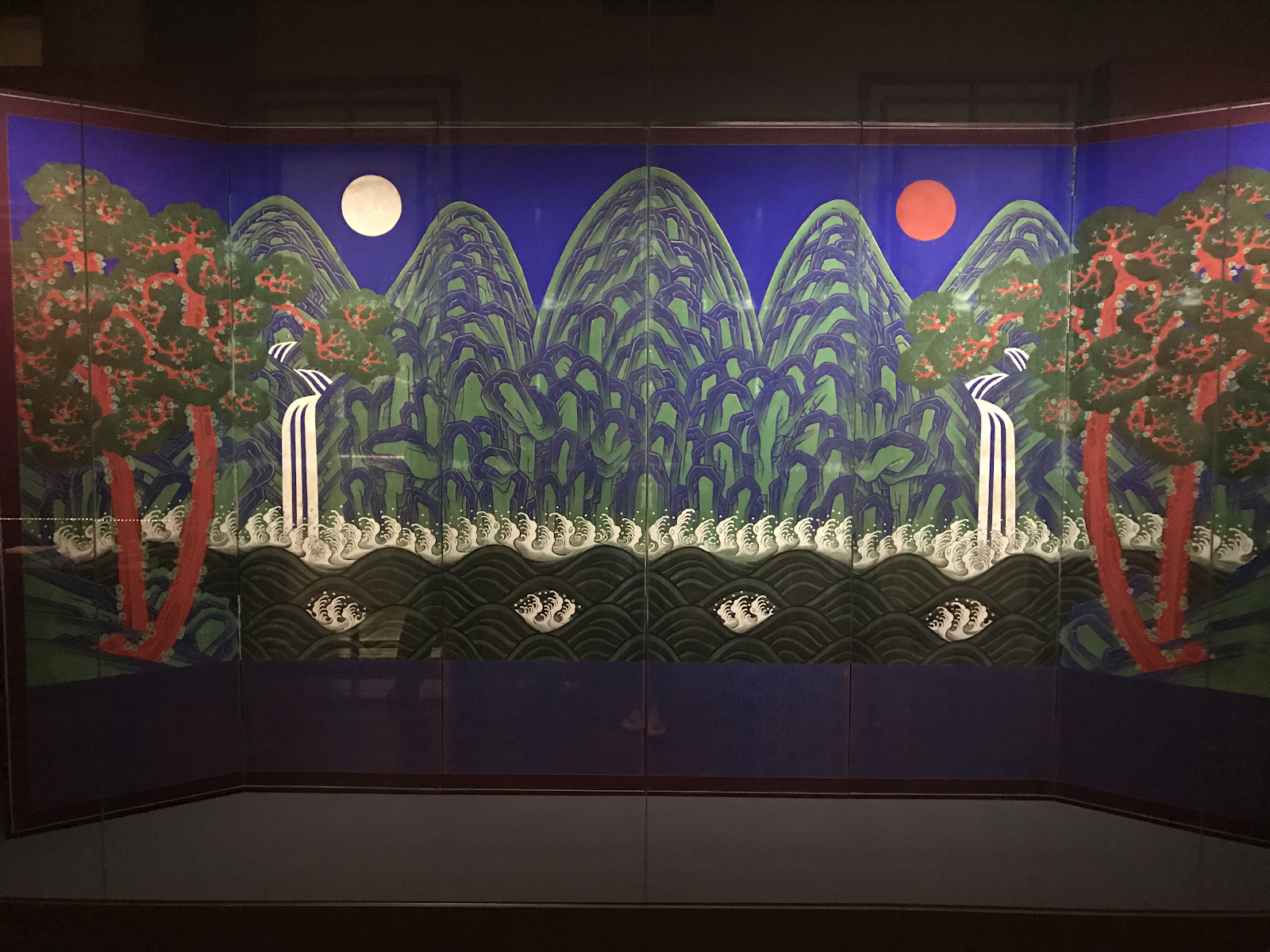


(Becoming Again, Coming Together, Ran Hwang) (Ran Hwang and her mixed media installation, Image courtesy of Asian Civilisation Museum)


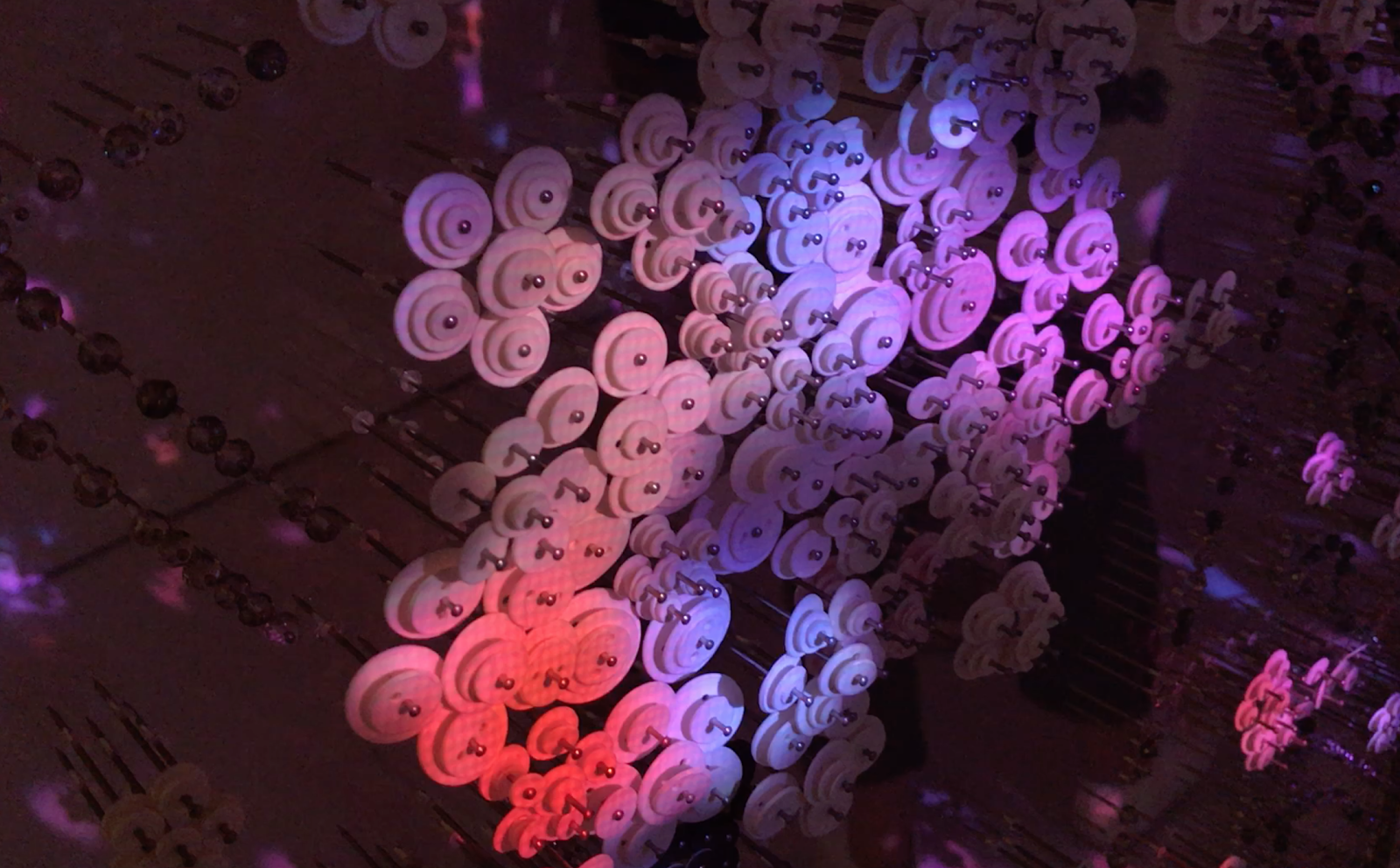
Using 50,000 pins, handmade paper buttons, beads and threaded intricate designs together with a projected animation, Ran Hwang created an installation which merges antiquity and modernity. Ingeniously making use of the pillars in the enclosed room where she used to project a couple, each on one pillar, wearing luxurious Joseon era’s traditional clothes, namely the Hanbok, she selected a once in a lifetime event to showcase the permanency of traditions and culture - a wedding. This transient scene which symbolically reaches for a lifetime unity is also surrounded by hundreds of white-colored chilies. Traditionally, these were hung in front of houses that bore a new baby boy, their heir to a family household. It was a cardinal sin when the wife couldn’t produce an heir. Coupled with the Phoenix, otherwise known as the Fenghuang, the installation accentuates the virtue and grace of the Joseon era, the ritual of a wedding and the partnership between two individuals.
The assistant director of Asian Civilisation Museum, Bernard Tan, who also curated Ran Hwang’s exhibition noted that her exhibit showed “one of the most splendid and brilliant moments in Korean history, and one of the longest dynasties”. The entire projection of the mixed media installation is a bonus to the 150 artifacts that brought history back to modern age. The animation cum audio composed by Jung Seung Kim, a director of the National Theater of Korea, was a step closer to experiencing the actual vibes of Joseon dynasty.
Ran Hwang’s works have always exuded a meditative quality due to the use of buttons, pins, and threads. To her, pins are points of connections and threads are a communicative link. By repetitively hammering and pounding thousands of pins onto walls and linking threads from one point to another, Ran Hwang herself projects the austere embodiment of a monk practicing spiritual discipline and Zen. With a clear inten, Ran Hwang removes the daily functions of these items and transforms them into mediums of art. The pins come together to form a full picture of varying symbols - sometimes of mystical creatures, antiquated buildings, flowers and even Buddha.
For the past decade, her works have been exhibited in both solo and group exhibitions across the globe in countries such as Korea, Switzerland, USA and France, and are collected by distinguished hotels, museums and companies including the Ritz-Carlton Hotel in Hong Kong, the Shin Choi Fashion Company in New York, and the National Museum of Contemporary Art in Seoul.


(Moon Jar, National Museum of Korea, Seoul)
As for paintings, nature is a dominant muse which had inspired countless paintings and calligraphy works. Bamboos, known to be a “noble” plant often due to its huge economic and cultural significance to the communities, were often depicted in paintings, accompanied by birds and flowers.

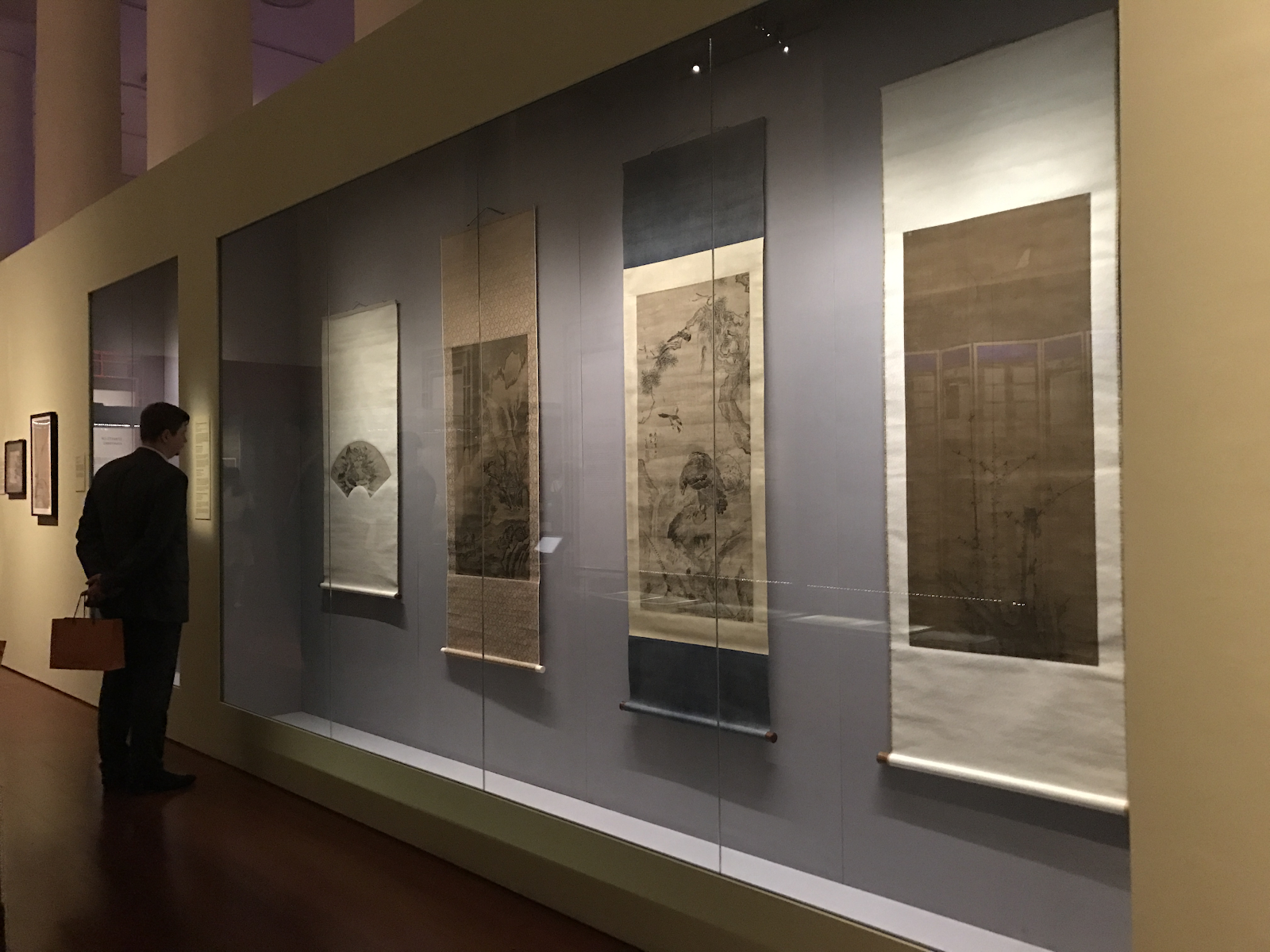
(Calligraphy of Successive Rulers, National Palace Museum of Korea, Seoul)
Calligraphy was associated with the cultivating of one’s mind and personality - its importance was heavily emphasised among the ruling elites. Hence, Joseon’s kings often spend a large amount of time devoted to practicing and writing calligraphy. Many a time, the king’s calligraphy will be released to the common people after the death of the king by the king’s successor. They are often engraved onto a wooden block and displayed in public.Today, they are precious relics and artefacts from yonder days.

(Answer Sheet for Classics Licentiate Examination, National Museum of Korea, Seoul)
Answer Sheet for Classics Licentiate Examination shows the answers to the national examination, Classics Licentiate Examination, that was held once every 3 years that can bring honour and prestige to an ordinary family.
This piece submitted by a student, Jeong Yeolsang, who was 59 at the time. The average age of students who took this exam was 29. Despite his seniority, he brought much honour to his family with this passing certificate and ensuring his future generation could remain as yangban, the highest social class during the Joseon dynasty who were mainly civil servants and military officers.
The gwageo examination was characterised under three categories, namely the literary examinations, military examination and the miscellaneous examinations. This was the only way for an individual to gain a position in the civil sector at the time. Anyone can sit for the examination except, chunmin, the lowest social class. In reality, only the yangban had the luxury of time and money to allow their children to study for the national examination. This piece implied a very pragmatic and harsh period of the Joseon period especially for the young generations. Not only was the gwageo very important to an individual, but it is also to their family. For the yangban, the failure to produce a graduate within four generations will mean the downgrade in the family’s class status and their authority. The presence of some form of higher education in Korea can be traced back to as early as the 4th century and we can observe how the society viewed the educated has been preserved even now in the 21st century.
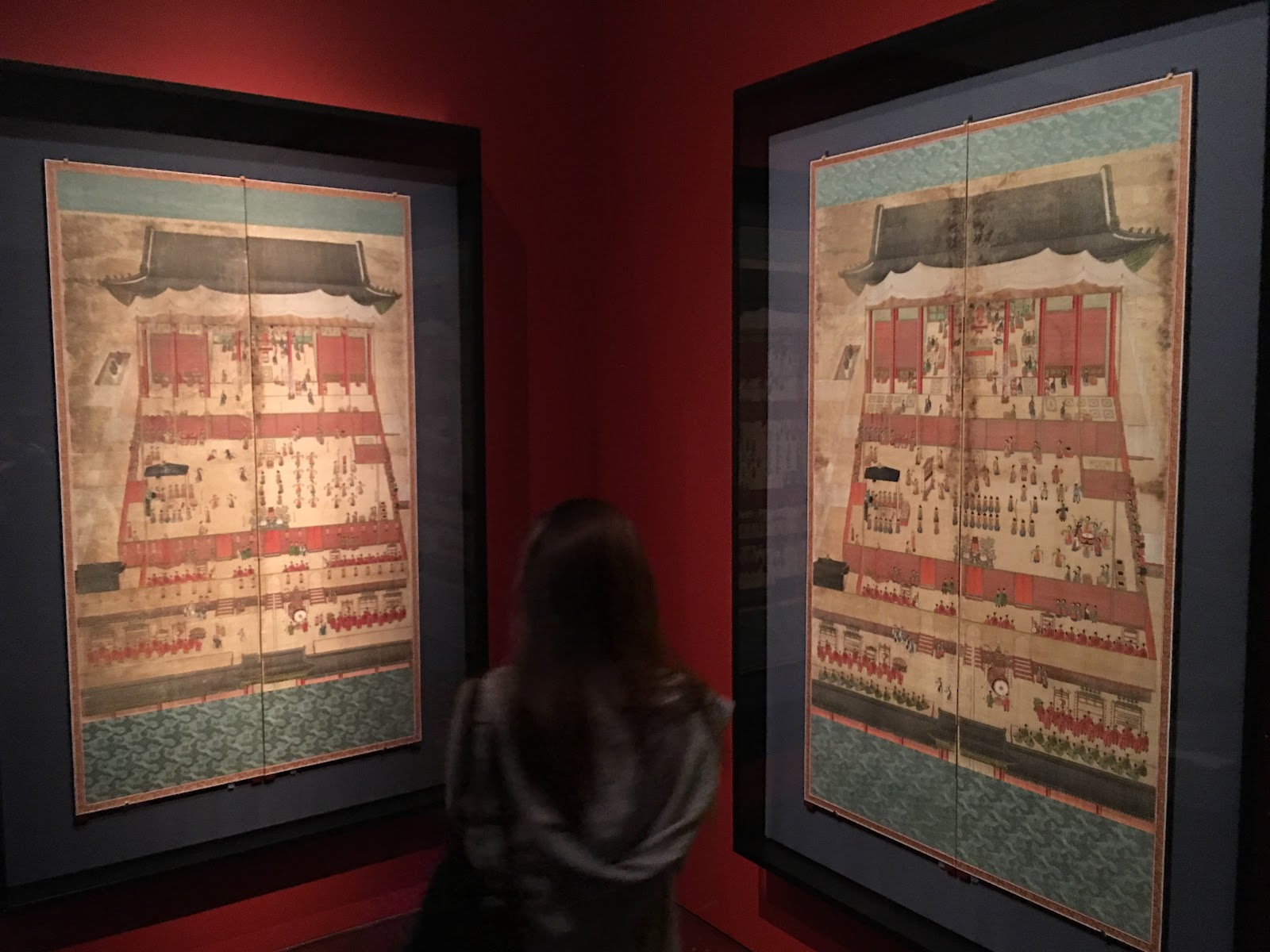
(Pair of Screen, National Museum of Korea, Seoul)
Pair of screens, or Naeyeon, done up in 1848 shows the banquet for the 59th birthday of Elder Queen Mother Sunwan. The banquet known as Naeyeon is with a female honouree and the exclusion of any male participants within the banquet itself. A red piece of linen was used as a layer to exclude any males from the banquet entirely. The influence of Neo-Confucianism in the Joseon era could have restricted women’s freedom and authority.
Although the Neo-Confucian teachings were introduced from China only in the Joseon Era, it was known that the Koreans had their life regulated not just by Neo-Confucianism, but also in a more stringent and hierarchical manner. Even today, the seniority system determines strict social etiquette and manners within the Korean society.

(Choe Yeonhong, Chae Yongsin, National Museum of Korea, Seoul, Registered Cultural Heritage #486)
The Portrait of Choe Yeonhong is a tribute to her patriotic act during the rebellion of Hong Gyeong-nae in 1811. Hong Gyeong-nae who was an insubordinate, led an army of farmers towards the Joseon Dynasty army troops gaining much of the northwest area of Joseon and the heavily armed area of the Jeongju castle. This portrait of her is to acknowledge her loyalty and faithfulness to the Jeong Ji county magistrate during the rebellion of Hong Gyeong-nae. In her portrait painted by Chae Yongsin, she is seen holding a baby which highlights her femininity while recognising her courageous act. As portraitures were rare and posed an important symbol compared to present day selfies (or selcas), we can hence comprehend how respected and heroic Choe Yeonhong was. Many talented artists were receiving instructions from the king and the portrait was most likely done up with specific instructions given from the authorities and with the consent of the king himself.
Free Admission to Becoming Again; Coming Together for all visitors.
Background about Joseon Korea
The Joseon dynasty was founded by General Yi Seongye in 1392, lasting more than 500 years before it ended in 1897. The Kingdom of Joseon was the last dynasty and the longest Confucian-ruling dynasty in Korea, where the the Korean arts and culture underwent a renaissance. Described as pre-modern Korea, it greatly influenced and shaped how Korea is today where Koreans still wear the traditional clothing, hanbok, and use the Korean alphabets called hangul.(Becoming Again, Coming Together, Ran Hwang) (Ran Hwang and her mixed media installation, Image courtesy of Asian Civilisation Museum)
Ran Hwang’s Becoming Again, Coming Together, 2017
Complementing the artefacts, documents and paintings on display in Joseon Korea is Ran Hwang’s mixed media installation titled Becoming Again; Coming Together. This installation took the Seoul and Manhattan based artist 8 days of repetitive hammering and pinning.Using 50,000 pins, handmade paper buttons, beads and threaded intricate designs together with a projected animation, Ran Hwang created an installation which merges antiquity and modernity. Ingeniously making use of the pillars in the enclosed room where she used to project a couple, each on one pillar, wearing luxurious Joseon era’s traditional clothes, namely the Hanbok, she selected a once in a lifetime event to showcase the permanency of traditions and culture - a wedding. This transient scene which symbolically reaches for a lifetime unity is also surrounded by hundreds of white-colored chilies. Traditionally, these were hung in front of houses that bore a new baby boy, their heir to a family household. It was a cardinal sin when the wife couldn’t produce an heir. Coupled with the Phoenix, otherwise known as the Fenghuang, the installation accentuates the virtue and grace of the Joseon era, the ritual of a wedding and the partnership between two individuals.
The assistant director of Asian Civilisation Museum, Bernard Tan, who also curated Ran Hwang’s exhibition noted that her exhibit showed “one of the most splendid and brilliant moments in Korean history, and one of the longest dynasties”. The entire projection of the mixed media installation is a bonus to the 150 artifacts that brought history back to modern age. The animation cum audio composed by Jung Seung Kim, a director of the National Theater of Korea, was a step closer to experiencing the actual vibes of Joseon dynasty.
Ran Hwang’s works have always exuded a meditative quality due to the use of buttons, pins, and threads. To her, pins are points of connections and threads are a communicative link. By repetitively hammering and pounding thousands of pins onto walls and linking threads from one point to another, Ran Hwang herself projects the austere embodiment of a monk practicing spiritual discipline and Zen. With a clear inten, Ran Hwang removes the daily functions of these items and transforms them into mediums of art. The pins come together to form a full picture of varying symbols - sometimes of mystical creatures, antiquated buildings, flowers and even Buddha.
For the past decade, her works have been exhibited in both solo and group exhibitions across the globe in countries such as Korea, Switzerland, USA and France, and are collected by distinguished hotels, museums and companies including the Ritz-Carlton Hotel in Hong Kong, the Shin Choi Fashion Company in New York, and the National Museum of Contemporary Art in Seoul.
(Moon Jar, National Museum of Korea, Seoul)
The Nature of Korean Art
The two major art forms during the Joseon dynasty was paintings and ceramics. The high mastery of the combination of earth, water and fire at the correct and ideal amount will result in the ceramics that can be found in the Joseon era, largely influenced by the Daoist philosophy.As for paintings, nature is a dominant muse which had inspired countless paintings and calligraphy works. Bamboos, known to be a “noble” plant often due to its huge economic and cultural significance to the communities, were often depicted in paintings, accompanied by birds and flowers.
The Arts of the Brush
Although the usage of the brush has been present even in the Goguryeo Kingdom, the dynasty before Joseon, the usage of the brush for art was principally and largely used only in the Joseon dynasty.(Calligraphy of Successive Rulers, National Palace Museum of Korea, Seoul)
Calligraphy was associated with the cultivating of one’s mind and personality - its importance was heavily emphasised among the ruling elites. Hence, Joseon’s kings often spend a large amount of time devoted to practicing and writing calligraphy. Many a time, the king’s calligraphy will be released to the common people after the death of the king by the king’s successor. They are often engraved onto a wooden block and displayed in public.Today, they are precious relics and artefacts from yonder days.
(Answer Sheet for Classics Licentiate Examination, National Museum of Korea, Seoul)
Answer Sheet for Classics Licentiate Examination shows the answers to the national examination, Classics Licentiate Examination, that was held once every 3 years that can bring honour and prestige to an ordinary family.
This piece submitted by a student, Jeong Yeolsang, who was 59 at the time. The average age of students who took this exam was 29. Despite his seniority, he brought much honour to his family with this passing certificate and ensuring his future generation could remain as yangban, the highest social class during the Joseon dynasty who were mainly civil servants and military officers.
The gwageo examination was characterised under three categories, namely the literary examinations, military examination and the miscellaneous examinations. This was the only way for an individual to gain a position in the civil sector at the time. Anyone can sit for the examination except, chunmin, the lowest social class. In reality, only the yangban had the luxury of time and money to allow their children to study for the national examination. This piece implied a very pragmatic and harsh period of the Joseon period especially for the young generations. Not only was the gwageo very important to an individual, but it is also to their family. For the yangban, the failure to produce a graduate within four generations will mean the downgrade in the family’s class status and their authority. The presence of some form of higher education in Korea can be traced back to as early as the 4th century and we can observe how the society viewed the educated has been preserved even now in the 21st century.
(Pair of Screen, National Museum of Korea, Seoul)
Pair of screens, or Naeyeon, done up in 1848 shows the banquet for the 59th birthday of Elder Queen Mother Sunwan. The banquet known as Naeyeon is with a female honouree and the exclusion of any male participants within the banquet itself. A red piece of linen was used as a layer to exclude any males from the banquet entirely. The influence of Neo-Confucianism in the Joseon era could have restricted women’s freedom and authority.
Although the Neo-Confucian teachings were introduced from China only in the Joseon Era, it was known that the Koreans had their life regulated not just by Neo-Confucianism, but also in a more stringent and hierarchical manner. Even today, the seniority system determines strict social etiquette and manners within the Korean society.
(Choe Yeonhong, Chae Yongsin, National Museum of Korea, Seoul, Registered Cultural Heritage #486)
The Portrait of Choe Yeonhong is a tribute to her patriotic act during the rebellion of Hong Gyeong-nae in 1811. Hong Gyeong-nae who was an insubordinate, led an army of farmers towards the Joseon Dynasty army troops gaining much of the northwest area of Joseon and the heavily armed area of the Jeongju castle. This portrait of her is to acknowledge her loyalty and faithfulness to the Jeong Ji county magistrate during the rebellion of Hong Gyeong-nae. In her portrait painted by Chae Yongsin, she is seen holding a baby which highlights her femininity while recognising her courageous act. As portraitures were rare and posed an important symbol compared to present day selfies (or selcas), we can hence comprehend how respected and heroic Choe Yeonhong was. Many talented artists were receiving instructions from the king and the portrait was most likely done up with specific instructions given from the authorities and with the consent of the king himself.
The Rest is History
Looking back, it is indeed enthralling how far Korean history has come and I am glad that we have the privilege to view these historical treasures and understand the context behind them. The collaboration between Singapore and Korea’s museums prove that with technology and globalization, cultures are bridged and citizens of a nation are able to experience and relive another nation’s history without the burden of distance and time zones.Admission details
Entrance fee: $10 for Singaporeans and PRs (free for children and seniors) and $15 for tourists ($10 concession, $45 for a family of 5), including entry to permanent galleries.Free Admission to Becoming Again; Coming Together for all visitors.


_by_Chong_Fah_Cheong_Cavenagh_Bridge_Singapore__20060530.jpg)
